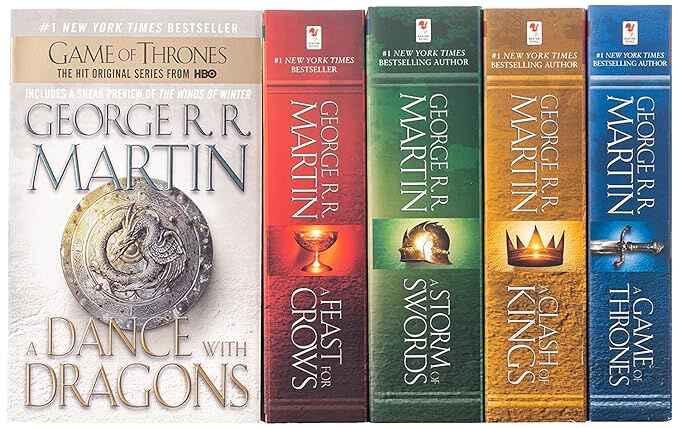Blog •
Last updated on Feb 12, 2025
How to Set Your Freelance Marketing Rates in 5 Steps
Linnea Gradin
The editor-in-chief of the Reedsy Freelancer blog, Linnea is a writer and marketer with a degree from the University of Cambridge. Her focus is to provide aspiring editors and book designers with the resources to further their careers.
View profile →This article was written in collaboration with professional Reedsy marketers Lisa Ferland, an expert on crowdfunding (take her course here), and Tara Lewis, a children’s and YA marketer and former Director at Disney Publishing Worldwide.
Combining creativity with market analysis, marketers are the people who put together campaigns that drive sales across all industries — not least publishing. Because of the broad scope of tasks that fall under the marketing umbrella, it can be hard to advise freelance marketers on what exactly they should charge for their services. In this article, however, we’ll be breaking down some of the key factors that affect the price of marketing and give you 5 simple steps to follow to set your own freelance marketing rates for your next project.
So if you’re ready to update your rates, dust off your abacus and let’s get started.
1. Consider the type of marketing you’re providing
The first thing you need to establish before you can decide what to charge for your services is exactly what type of marketing it is you're doing. Most marketing campaigns or projects will contain several moving parts, and the services that freelance marketers will provide on any given project may range from writing social media copy to developing elaborate, long-term marketing strategies for big-budget clients.
Different marketers will specialize in different skills. So, before you put together your quote for a project, it’s important to know where your expertise lies and what other professionals are charging for similar services.
Traditional marketing
Traditional marketing is the type of marketing that often comes to mind when we speak of marketing and advertising: running print ads in magazines or on billboards, putting together TV commercials for big-budget clients, or, on a smaller scale, handing out flyers. It's all about getting boots on the ground to establish a tangible presence in the spaces where the target audience moves and aims to reinforce a client’s brand in what is largely a one-way form of communication.

Most marketing agencies combine traditional marketing with digital (more on this below) and the cost of these services comes down to budget; the more a client is willing to invest, the more ad space can be acquired and campaign material produced. And because traditional marketing relies on purchasing raw material or physical advertising space — space that is limited and highly sought after — the price is often steeper than for digital marketing. Running a print ad, for example, can cost anywhere between $2,000 to $160,000.
Digital marketing
Digital marketing is essentially what it says on the tin; any marketing that falls within the online realm, from email marketing to Search Engine Optimization (SEO). Like traditional marketing, this is based on creating visibility in the spaces where consumers move, which, in this day and age, to a large extent includes digital spaces.
Apart from often being more cost-efficient than traditional marketing, digital marketing also invites two-way communication between producer and consumer, making it a dynamic and flexible marketing approach, popular among freelance marketers.
Here’s what you might expect to charge per hour for some popular types of digital marketing:
|
Type of marketing |
Tasks |
Example of hourly rates |
|
Search Engine Optimization |
Optimizing websites to attract search traffic using e.g. keyword analysis and link-building. |
$65 to $250 |
|
Content marketing |
Writing or creating content based on keyword research to answer search queries. |
$15 to $80 |
|
Social media marketing |
Managing a client’s online presence on various social media platforms, creating content and driving engagement. |
$15 to $80 |
|
Ads marketing |
Running and managing ads on platforms such as Meta, Google, and Amazon. |
$50 to $175 (excluding the cost of the ads) |
|
Email marketing |
Nurturing leads and funneling customers towards purchase or joining a service. |
$45 to $200 |
As you can see, the price tags for different types of digital marketing and the income of one marketer compared to the next might be vastly different. Additionally, rates may vary depending on the industry you’re working towards. But one nice thing about digital marketing is that it makes revenue attribution much easier than traditional marketing does — so you can clearly see how campaigns are driving sales, and make further marketing decisions based on that.
2. Narrow down your marketing industry niche
The industry you specialize in will affect the final price tag of your services, as different types of clients will have different budgets to dedicate to marketing: a marketer who works with luxury brands can often charge higher than someone who works with, say, indie authors.
Even within industries, there are several subcategories and niche services a marketer might offer which will affect their rate.
Book marketing
For an example of this, let’s take a look at the book marketing field to get a sense of what book marketers, specifically, charge for their work — and which variables affect their prices.

JOIN OUR NETWORK
Supercharge your freelance career
Find projects, set your own rates, and get free resources for growing your business.
In-house book marketers
According to ZipRecruiter, salaried book marketing specialists working for publishing presses in the US can expect to be paid an average of some $47,000 per year, though many will fall well below this number with starting salaries around $23,000, while executives and highly experienced marketers can earn up towards $80,000+ per annum.
Freelance book marketers
In the world of book publishing, freelancers marketers may not only work with publishing houses on a per project or retainer basis; it is also common that freelance book marketers forgo the middleman and work directly with authors who are either self-publishing or preparing to query agents and publishing houses.

JOIN REEDSY
Find exciting new projects
We connect publishing professionals with our community of 1,500,000 authors.
Reedsy marketing rates
In order to set direct-to-client rates, freelancers will usually analyze data from their industry to establish a going rate. To help you get a sense of what freelance book marketers might charge for different types of services when working directly with authors, we’ve looked at data from our marketplace in 2023/24 and crunched the numbers.
|
Service |
Fee / project |
|
Advertising |
$1,000 |
|
Email marketing |
$700 |
|
Marketing strategy |
$1,100 |
|
Metadata and blurb optimization |
$700 |
Average consultation rates can range from $150 to $300 per hour, with 35% of Reedsy projects billed at $2,000 or more. Many projects on the lower end of the price range consist of single services that take less time to complete, while those on the higher end often include a combination of services. To give a sense of where the ceiling might be, some of the more elaborate collaborations on Reedsy have stretched into the $25,000 price range. Each marketing project will be different and the final price tag will ultimately depend on what you agree on together with the client.
Remember: there are no strict guidelines when it comes to setting your freelance marketing rates and you may well charge more or less than these averages, depending on your level of experience and the industry you’re working in.
Ask your peers
If you’re still unsure what people in your particular niche charge, professional book marketing and crowdfunding expert Lisa Ferland’s advice is to ask around:
“Ask other colleagues who are offering similar services to what you want to offer and then see how it feels for you. Do you feel your time is worth more/less? You'll probably find that you're undercharging compared to the current market.”

The next thing to consider is your pricing model.
3. Decide on a pricing model
Once you have a sense of what your marketing niche is and what others typically charge their clients in your industry, it’s time to decide on what pricing model to apply. Broadly speaking, your choice is between charging an hourly rate and charging per project.
Start with hourly rates
Many freelancers start their freelancing careers by charging hourly rates: notifying the client of their rates and tracking how much time they spend on the project before sending their bill. This is how Lisa Ferland got her start:
“When I first started freelancing, hourly rates made the most sense because I was unsure how much I could deliver within a given time frame. I tracked my hours closely and refined my processes to become more time efficient.”
This is not a bad place to start, as it gives you a straightforward overview of your earnings: if you work 25 hours on a project at a $50/hour rate, you will earn $1250. Easy.
Assess your needs and wants
To figure out what a reasonable hourly rate for you is, it’s a good idea to establish an ideal annual income goal. Assess what your current financial situation is — how much money you need to cover things like living expenses, food, and loans, as well as necessary business expenses such as bookkeeping tools and design tools — then work from there to include other wants like travel, savings, skill building, and investment.
💸 For more insight into freelance money matters, check out this article on freelancer finances, this article on taxes in the US, and this article on taxes in the UK.
Once you’ve calculated how much you need and want to earn, the next step is to look at how many hours you want to ideally (and reasonably) work per day and per year. With some simple math, you will then be able to arrive at an hourly rate which you can use as your base when you assess individual projects. This will help you set a realistic goal and make sure you’re not working 20 hours per day in order to meet your needs.
Hourly rates can punish experienced freelancers
One drawback of charging hourly rates, however, is that the better and more efficient you become at your job, the fewer hours you’ll need to complete a task — which means, when charging hourly, you’re effectively being penalized for being good at what you do. That’s where project rates come in.
Charge project rates for the value you provide, not your time
Project-based fees can help you increase your income without having to work longer hours, allowing you to factor in the client, the end result, and the experience you bring to the table, and not just your time. That’s why Lisa Ferland started charging per project, rather than per hour:
“Now, I don't believe in trading my time for money, because my expertise and experience means that I get more done in less time. That doesn't mean that I should be paid less for the work. I have created a signature suite of services and have fixed prices for each service. This allows me to provide consistent service and deliver results for each client without worrying about tracking time.”
Charging hourly rates can also make your rates unsustainable for your client base when you factor in the preparation you need to do for individual projects, Reedsy marketer Tara Lewis notes:
“I believe that part of preparing a tailored marketing plan is to read every book that I work on. I wouldn’t want to charge hourly for reading time, yet I do need to include it in some way as an element of the overall project. For instance, reading a 500-page YA novel and reading a 32-page picture book would not require equal time. Creating a tiered approach to my fees allows me to figure in that preparation time without overcharging.”
By charging per project, she is able to charge all her clients fairly, whether they are the author of children's literature, middle grade books, or YA, without underselling herself.
4. Adjust rates according to each project
Assuming that you’ve decided to charge per project, even if you have an idea for what your general rate will be for different types of project, you should reassess your rates for each individual deal you take on. That’s because every project will vary in scope and every client is different. To reiterate, factors that affect your project rates can include but are not limited to:
- Who the client is and the industry they’re in
- The marketing services the project involves
- How much time you expect to put into the project
- Your reputation, experience, and expertise in the field
- The country you live and work in (or where your client is located)
For example, in book marketing, your price might depend on what type of book you’re marketing, like Tara Lewis who charges differently depending on whether it is a picture book, a middle grade book, or a YA book.
You may also consider how excited you are about working on that project. The joy of freelancing is that you get to decide what work to take on and how much you charge for it. Ideally, you’ll spend most of your time on projects you’re excited about, but there may also be projects that you take on because you need the money. In that case, when the passion is not all the way there, some freelancers decide to charge more as an incentive for themselves.
Equally, consider what value your marketing skills bring to the project. Are you helping your client market something that will, in turn, lead consumers to purchase from a whole range of items the client sells — like a book series — or are you simply marketing a one-time product, like a standalone book? If it’s the former, you can consider charging more for the second book in a series than you would for a standalone, even if the work involved for you is the same because your marketing is likely to provide more value over time for your client.

There’s no right or wrong way to assess individual projects, so use your judgment and make sure you have a clear idea of how high or low you are willing to go before you negotiate rates.
5. Revise your base rates regularly
Lastly, remember to revise your overall rates regularly to make sure you’re charging a price that reflects your growing skills and expertise, without pricing yourself out of the markets that you’re hoping to target. This can be a tough balancing act; while you want to be competitive with your rates, you also don’t want to undervalue your work, or price yourself so low that you lose out on quality clientele.
On this point, Lisa Ferland shares that her business coach told her to “double whatever rate I "felt" I deserved and that would bring me closer to what others were already charging.” So don’t be afraid to raise your rates every few projects. Then, you can come back in a few months to assess what effect it has had on your business.
Of course, raising your prices will naturally mean you are working with a smaller pool of clients, and this won’t always leave you with a ton of choice. Occasionally, in order to attract more clients that you like working with, you can temporarily lower your quotes to build a solid client base, Tara Lewis suggests:
“My approach when I first started freelancing was to charge lower rates in order to gain a following. I knew that, eventually, my work would speak for itself and projected that great reviews would translate into more clients. I was then able to raise my fees every so often until I reached a point that I felt was fair yet competitive. My fees are still on the lower side by choice, but this enables me to receive a larger pool of requests so that I can be selective, only taking on projects that I feel a connection to.”

FREE RESOURCE
Reedsy Profile Checklist
Make sure you tick all the boxes on your Reedsy profile by referring to our handy checklist.
However, be careful to not undervalue your work and lower your rates because you think you have to. There will always be clients whose budgets do not align with yours, but, as Lisa Ferland advises, “it’s more important that you create a system of services [and rates] that reflect how you want to work and then find the [clients] that match with you,” rather than price your services so low you start to resent your work or struggle to make ends meet. She continues that “it's very difficult to develop your consultancy services and to feel you're worth your value” at first, but with time, you will gain more confidence and a sense of what is a fair rate.
A savvy freelancer’s pricing will be dynamic, reacting to market changes, and changes in their own professional journey and expertise. Your prices will likely be changing regularly, so be prepared for flexibility, and to revisit some of the earlier steps in this process periodically to make sure your pricing structure still makes sense for both you and your clientele.
Finding the rates that are right for both individual projects and for your freelancing business as a whole takes a lot of experimenting. There are no one-size-fits-all answers as each marketer and project will be different, but in order to not feel like you’re fumbling in the dark, make sure that you know your niche and that you have a good understanding of what your own goals are as a professional. The rest will come with time and experience. Good luck!
Reviewed by Ricardo Fayet
Reedsy co-founder and Chief Marketing Officer, Ricardo Fayet has worked with hundreds of authors on their launches and marketing campaigns. He is the author of two bestselling guides on marketing for authors, and a regular presenter at the largest writers' conferences.
Ricardo Fayet is one of the co-founders, and the chief marketing officer, of Reedsy. On top of overseeing the marketing for all Reedsy products, he has helped hundreds of authors with their own launches and marketing campaigns, landing several of their books on the Sunday Times or Wall Street Journal bestseller lists. He's the author of two books on marketing for authors: How to Market a Book: Overperform in a Crowded Market, and Amazon Ads for Authors: Unlock Your Full Advertising Potential, and a regular presenter at prestigious writers' conferences: NINC, AuthorNation, 20Books, RWA, and The Self Publishing Show Live, among others.
You can find Ricardo's insights all across the Reedsy blog, in his bi-weekly marketing newsletter, and in his two books.
Get Ricardo's books
- How to Market a Book: Overperform in a crowded market (Download the ebook for free)
- Amazon Ads for Authors: Unlock Your Full Advertising Potential (Get the ebook or print version here)
